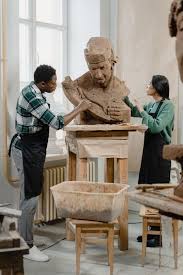Stamp: Vaidelotis – Fragment of Freedom Monument (Latvia 1992)
Vaidelotis – Fragment of Freedom Monument (Latvia 1992)
29 February (Latvia ) within release Definitive goes into circulation Stamp Vaidelotis – Fragment of Freedom Monument face value 30 Russian kopek
| Stamp Vaidelotis – Fragment of Freedom Monument in catalogues | |
|---|---|
| Michel: | Mi:LV 329 |
Stamp is vertical format.
Also in the issue Definitive:
- Stamp - Ancient Warrior – Fragment of the Brethren Cemetery face value 10;
- Stamp - Vaidelotis – Fragment of Freedom Monument face value 20;
- Stamp - Ancient Warrior – Fragment of the Brethren Cemetery face value 30;
- Stamp - Vaidelotis – Fragment of Freedom Monument face value 30;
- Stamp - Lacplesis (Bearslayer) – Fragment of Freedom Monument face value 40;
- Stamp - Vaidelotis – Fragment of Freedom Monument face value 50;
- Stamp - Lacplesis (Bearslayer) – Fragment of Freedom Monument face value 50;
- Stamp - Lacplesis (Bearslayer) – Fragment of Freedom Monument face value 100;
Stamp Vaidelotis – Fragment of Freedom Monument it reflects the thematic directions:
A monument is a type of structure that was explicitly created to commemorate a person or event, or which has become relevant to a social group as a part of their remembrance of historic times or cultural heritage, due to its artistic, historical, political, technical or architectural importance. Examples of monuments include statues, (war) memorials, historical buildings, archaeological sites, and cultural assets. If there is a public interest in its preservation, a monument can for example be listed as a UNESCO World Heritage Site. The Palgrave Encyclopedia of Cultural Heritage and Conflict gives the next definition of monument:
A musical instrument is a device created or adapted to make musical sounds. In principle, any object that produces sound can be considered a musical instrument—it is through purpose that the object becomes a musical instrument. A person who plays a musical instrument is known as an instrumentalist. The history of musical instruments dates to the beginnings of human culture. Early musical instruments may have been used for rituals, such as a horn to signal success on the hunt, or a drum in a religious ceremony. Cultures eventually developed composition and performance of melodies for entertainment. Musical instruments evolved in step with changing applications and technologies.
Sculpture is the branch of the visual arts that operates in three dimensions. Sculpture is the three-dimensional art work which is physically presented in the dimensions of height, width and depth. It is one of the plastic arts. Durable sculptural processes originally used carving (the removal of material) and modelling (the addition of material, as clay), in stone, metal, ceramics, wood and other materials but, since Modernism, there has been almost complete freedom of materials and process. A wide variety of materials may be worked by removal such as carving, assembled by welding or modelling, or moulded or cast.


